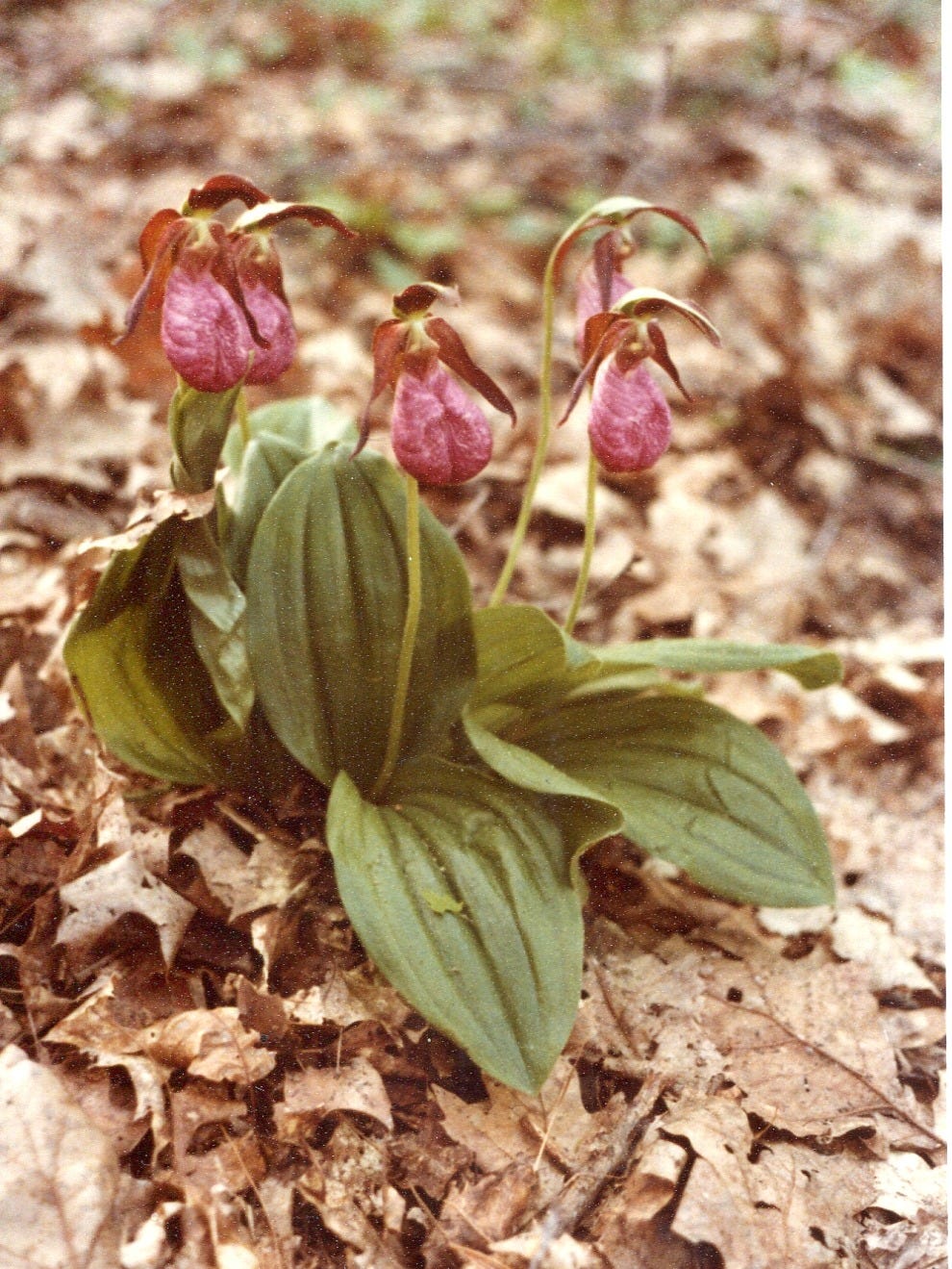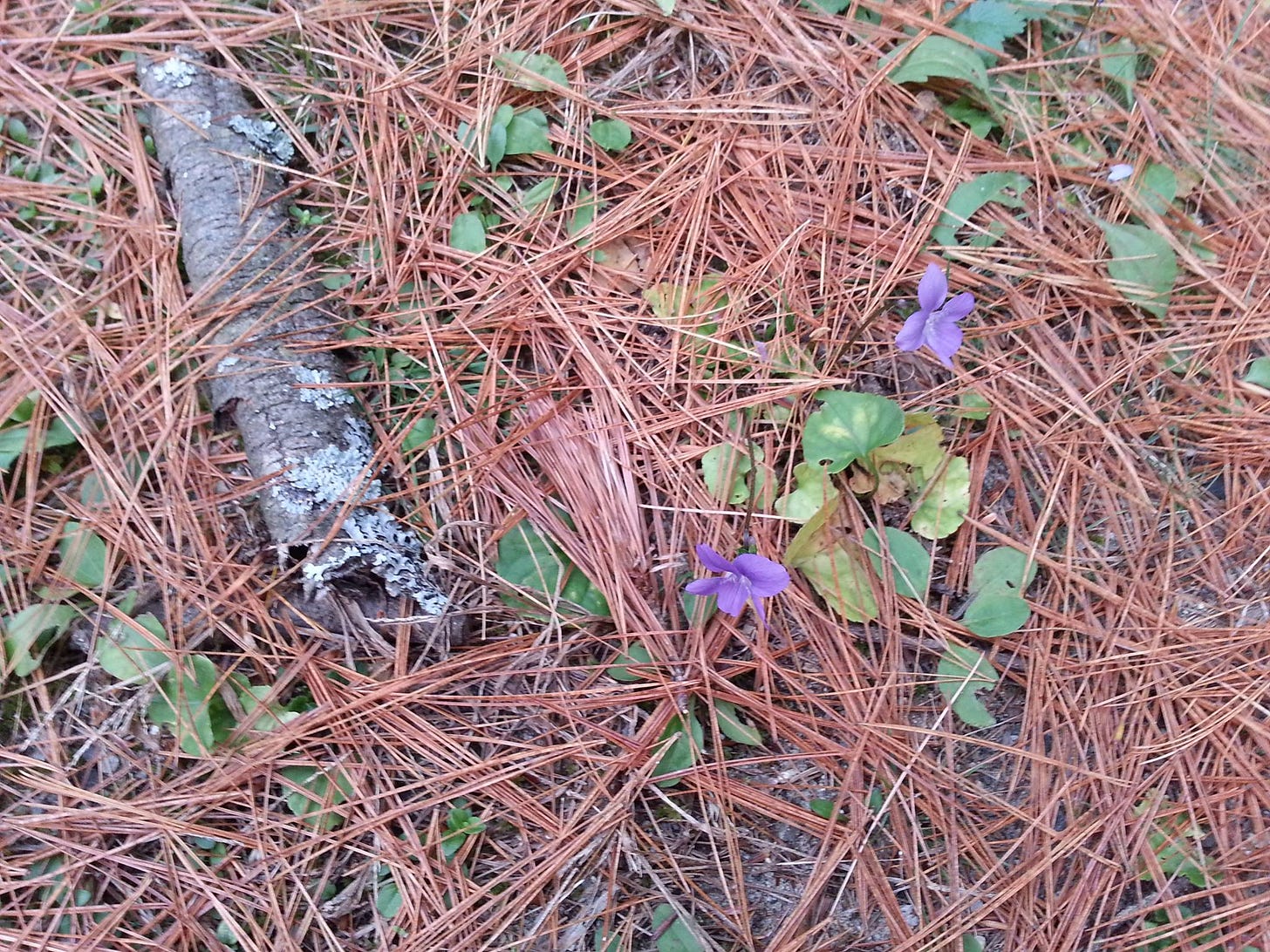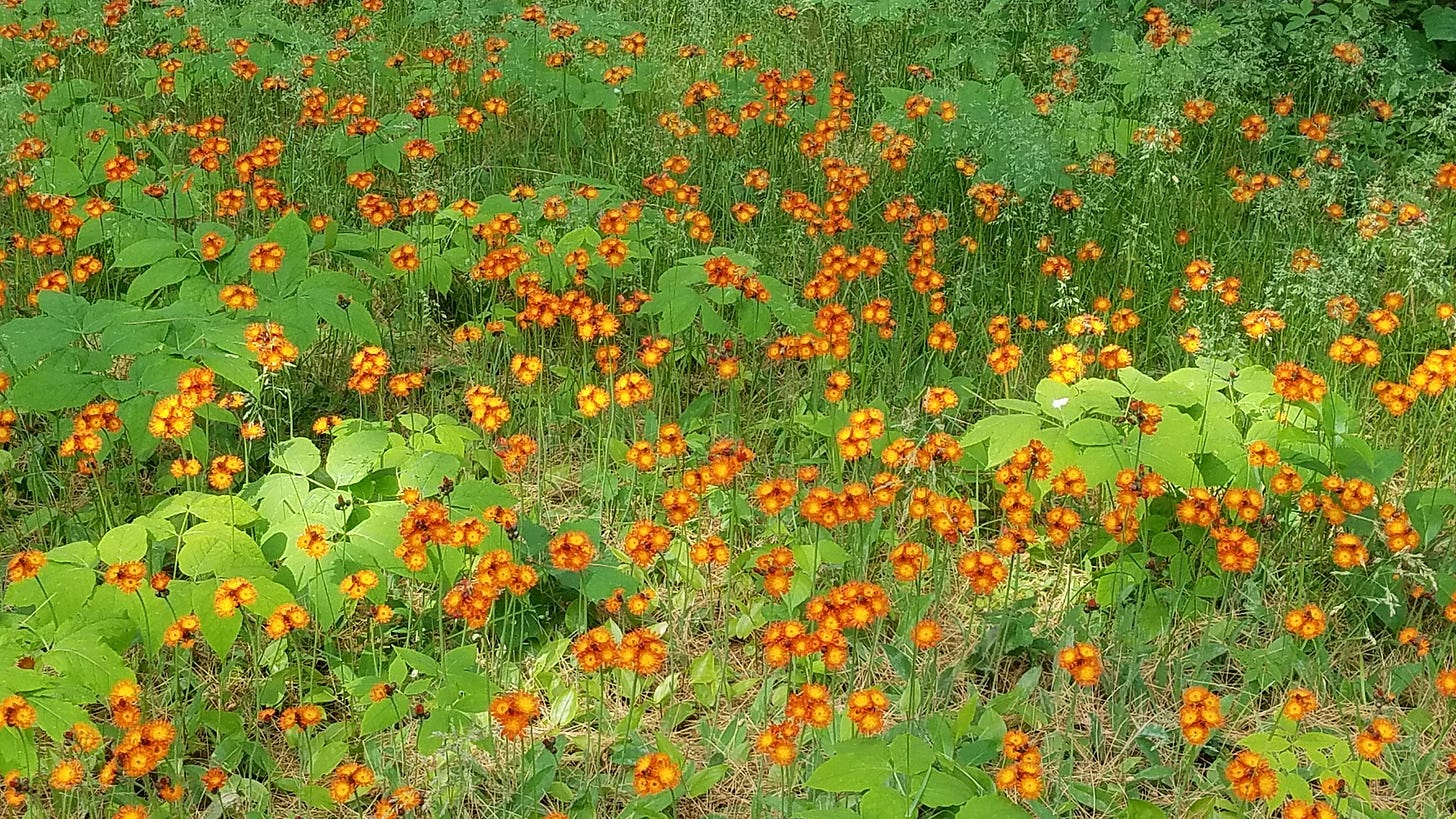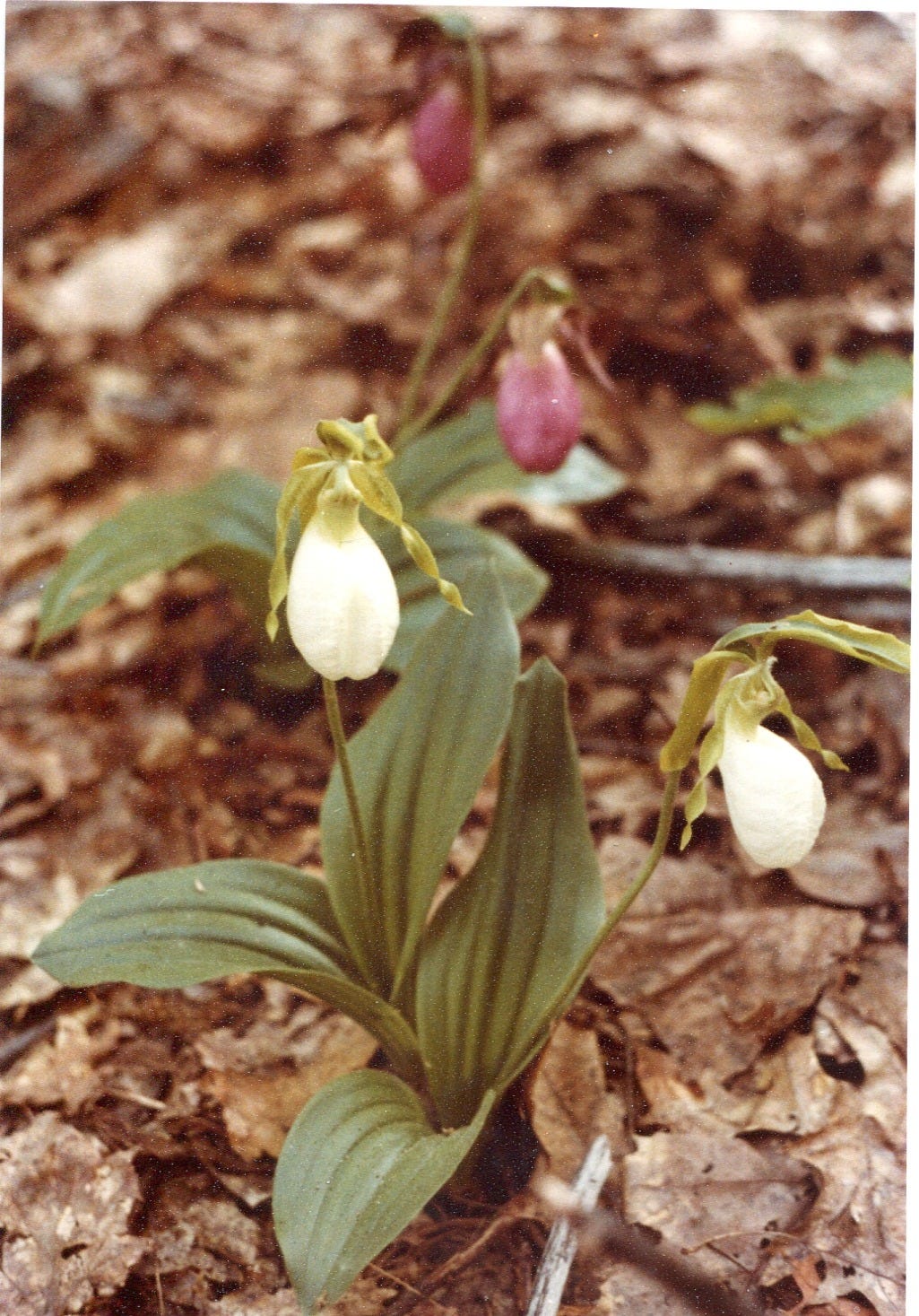“In wildness is the preservation of the world.” — Henry David Thoreau
“Spring ephemerals have been one of my happy discoveries as I’ve begun rehabilitating the neglected farm my wife and I bought in the Virginia Piedmont in 2022. Mostly, I’ve been discovering that everything I thought I knew about nature and gardening was wrong. In the case of these spring wildflowers, I realize that the knockout colors and fragrances I had associated with the natural world in my urban existence were, in fact, caricatures. In the wild, beauty is more subtle and more delicate — but it is also more satisfying.
“As I grow older, I find that this is true of life generally. It becomes clearer to me with each birthday that we are all spring ephemerals. We are here for just a short time. We sprout, we flower, we go to seed, we disappear. But, as the years race by, I am also learning to find beauty not just in bold colors but in subtler hues. The sublime is with us in every season, if we only pause long enough to take it in.”
—Dana Milbank, “This Tiny Flower Teaches Us All We Need to Know About Growing Old,” Washington Post, April 26, 2024
Nearly a year ago, back before I canceled my subscription to the Washington Post, I copied the above two paragraphs out of Dana Milbank’s editorial to save for a future blog. At the time I had no idea the Washington Post would discredit itself so thoroughly — to the point that I would not be able to return to re-read the complete editorial. But here we are. The quotation is enough, however, because I, too, have encountered spring ephemerals and marveled at their beauty.
A few years ago, I found the tiniest purple flower — something resembling a cross between a miniature iris and a miniature violet — hiding under some other plants right in the middle of my perennial bed. I cannot stress how tiny the blossom was, sitting atop its nest of grassy leaves — considerably smaller than the purple, white, and mauve violets that festoon my yard in springtime. That little flower, so small I nearly missed it, was the gift of the wind or some little bird that carried its seed here. However it arrived, it drifted in at some point, taking root at just the right time.
I couldn’t bear to dig it up, even though I was in the middle of a major overhaul of my perennial bed. All the plants around it were being separated and some of them were being relocated to other parts of the yard. The little wild ephemeral didn’t fit into the new design and, in fact, would only be dwarfed by everything else. Even so, it was simply too gorgeous to rip out of the ground, and it was far too delicate to transplant. So, I just stood there, mouth agape. And I left the plant right where it was.
I suppose a plant like that never would have survived in a perennial bed like the one I was installing. For one thing, it was a wee little thing, hiding in the shade of all the tall plants that had hemmed it in — the very plants we were ripping up all around it. It liked the cool and the dark. Rather than trumpeting its beauty, it favored modesty, even secrecy. The next day the plant was still there, but the flower had gone by, ephemeral that it was. The following year, the plant itself was gone.
To this day, I am not sure exactly what the plant was. My Peterson’s Field Guide to Flowers suggests it might have been a blue-eyed grass of some sort, but I don’t really know. What I do know is this: All these years later, I marvel that I happened to be there at just the right moment to see that tiny-but-majestic blossom in the first place.
Dana Milbank says “the sublime is with us every season, if only we pause long enough to take it in.” That’s exactly how I feel about that tiny spring ephemeral, whose name I will never know but whose beauty I will never forget. I could so easily have missed it. I could so easily have jettisoned it as I vigorously pulled up clump after clump of weeds. But, by some miracle, that tiny flower caught my eye, and I got to witness both wildness and subtlety wrapped into one tiny purple blossom.
Over the years I’ve thought about that little wildflower. Sure, I’ve wondered exactly what it was, but mostly I’ve marveled about the way it points to a fascination for wildflowers I’ve held my entire life. Whether it’s the common dandelion or the less common thrilling trillium, I love seeing wildflowers growing in their native habitat. Buttercups, daisies, goldenrod, black-eyed Susans, purple flag iris, bluets, hawkweed, pussy toes, Queen Anne’s lace — I love them all. I generally don’t pick them and I never try to transplant them. I simply admire their beauty and give thanks, knowing that the next time I walk by, they may very well have gone by. I “pause long enough to take it in,” as Dana Milbank advocates.
I grew up in a ranch-style house — certainly adequate for our family’s needs, but not fancy. What made it special was its setting. When my parents bought the land where they built that house, they cleared only enough of the land for the house itself and not a whole lot more. That meant I grew up surrounded by woods. I roamed those woods as a child — and, while they weren’t extensive in area, they had a lot to show me. Every May, for instance, I made a pilgrimage to the profusion of pink lady slippers growing there. I knew to look, not touch, for lady slippers are fragile creatures. From an early age, I was trained to admire without trying to grab for myself something that was wild and could not be tamed.
One year I tried to count the lady slippers. I gave up after I counted 200 and still would have had many more to count. My heart always beat faster when I reached the base of a certain tree behind the house, because I knew that, in contrast to all the pink lady slippers growing in the woods, I would find a small cluster of white ones growing there. It has been many years since I roamed those woods, but I am sure I could still find my way to that exact location where the white lady slippers blossomed. Now every spring I wonder if they or their progeny are still there.
Dana Milbank compares the life of spring ephemerals to human lives. These days, however, lives are often carefully curated online, where the kind of subtlety Milbank speaks of might be hard to detect. Online, people can make their lives seem to be like a perfect perennial bed, that is — carefully weeded, planted out neatly, everything in order, something always in bloom. In contrast, regular, face-to-face contact is more likely to expose our warts, our uncertainties, or even just the nuances of our gradual changes.
What if we allowed our lives to unfold in much less curated ways? We might be forced to recognize that it’s true, our time of radiant blooming, the blush of youth and young adulthood, lasts only briefly, just as it is for the spring ephemerals. I remember hustling to get out in the woods the minute I spotted the first lady slippers because I didn’t want to miss the show. The rest of the summer, the lady slippers’ broad green leaves would just sit there, unadorned. Life is transient, and so, too, is our springtime beauty. Make haste, those ephemerals might be saying, for the days and hours of glory pass by quickly.
But I think we would also find that each season brings its own revelations. I am old now. Long ago, I had my own day, blossoming like the lady slipper, but, for years now, I have been more like the unadorned lady slipper leaves nestled on the forest floor, doing my work, but no longer showing the radiant beauty of youth. Instead I see beauty in a different way. That’s because I now find it so much easier to focus my attention on deep-down things that really matter. Love and laughter matter, so I cultivate both. Quiet contemplation matters, so I make time for it. Community matters, so I put energy into building it. Freedom matters, so I go to protests and rallies when I can. (The horrors being unleashed by the current American administration are too numerous to list here. And anyway, you can hop onto somebody else’s blog for a good catalog of all the offenses.) My country matters, so I write to my elected representatives, even when it might seem pointless. My voice will certainly never count unless they hear from me.
These days at the rallies and protests I look around and see lots of gray and white hair. I see wheelchairs, walkers, and canes. And I hear people asking, “Where are all the young people?” The question is especially relevant, seeing as I live in a college town. I confess I have wondered the same thing — I who marched on Washington in my youth during the Vietnam War years. But I also marvel at all the old people, whom you might think had lost their energy or verve or convictions for this sort of thing by now, but here we are, still holding our signs and raising our voices. Recently I heard a commentator whose work I greatly admire say, “It’s good the rallies and protests are attracting a lot of old people. After all, who is going to arrest a bunch of little old ladies?” It reminded me of what I know about herds on the great savannah: the older animals travel on the outside of the pack while the young stay in the center, protected from predators. We old people may no longer display the glorious blossom of spring, but we have our place in the circle and cycle of things.
Praises be for the spring ephemerals that turn our eye to beauty and open our hearts to hope for the future. Praises be, too, for the unadorned green leaves that carry the plant through the rest of the growing season. Praises be for the dormant season that brings rest and refreshment. Praises be for the elders who nurture and protect. Praises be for the cycle of life. We are blessed to have a place in it. No matter where we are in that cycle, we have a part to play — glorious or subtle. Thoreau reminds us the “in wildness is the preservation of the world.” Perhaps those words are yet one more invitation for us to drop the allure of curating our lives so that we can sink deeply into the cycle of life and play the parts nature has given us to play.
Love,
Sylvia








I really love this: “As grow older, I find that this is true of life generally. It becomes clearer to me with each birthday that we are all spring ephemerals. We are here for just a short time.”
Thanks for letting us wander behind your childhood home…
Our little yard in the woods sported lots of little blue-eyed grasses, in bloom at this time of the year for just a little while. I loved to see them, along with the pink lichen that grew on a rocky ledge. It stayed pink for just a while in the spring.